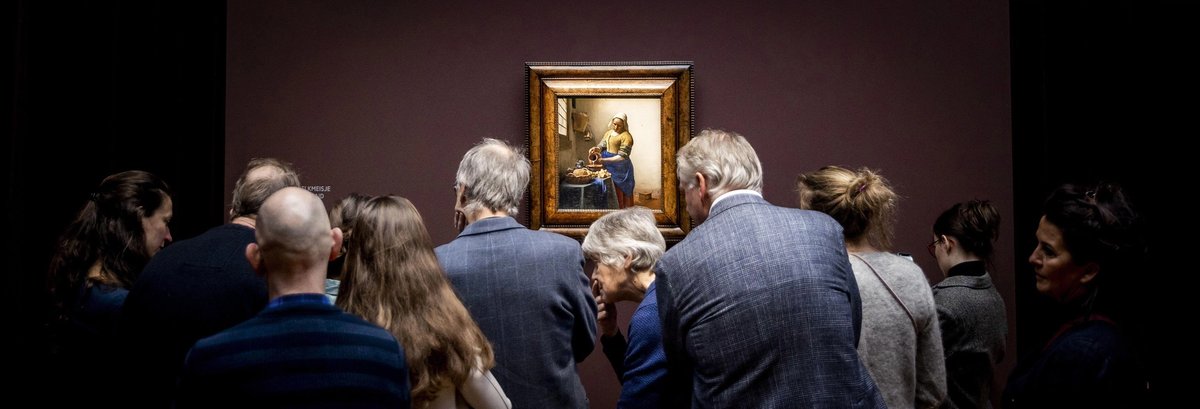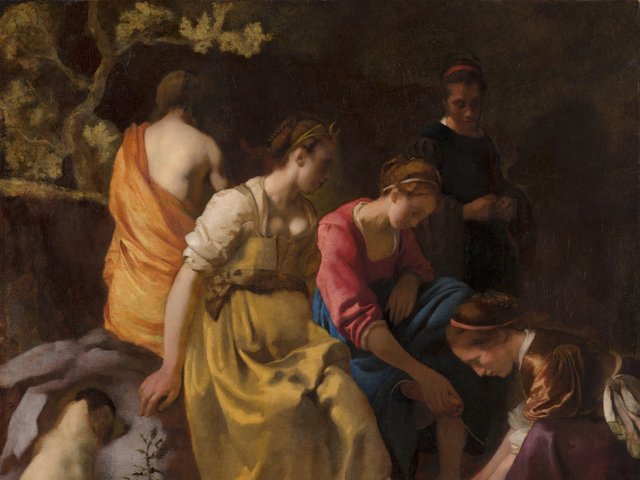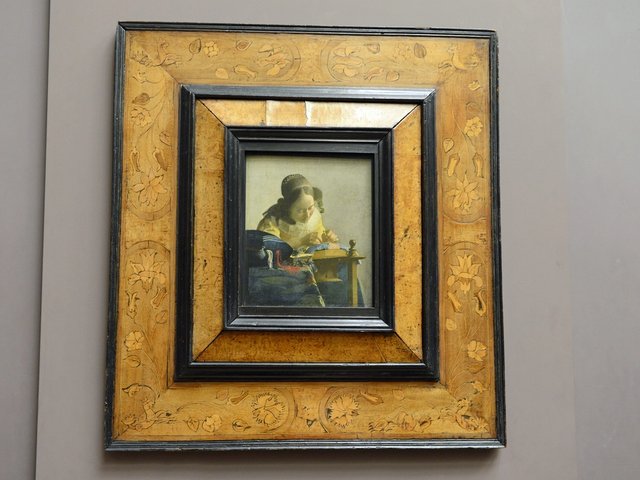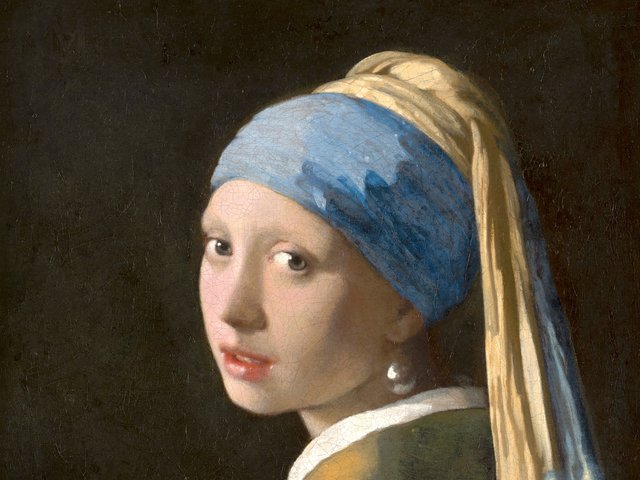The Rijksmuseum’s Vermeer exhibition of 2023 is arguably the world’s most successful show this century. It was spectacular in terms of ticket sales (650,000, with the main batch selling out only two days after the opening), the presentation of the largest-ever group of the artist’s works (28 of the 37 paintings) and for what it revealed about the pictures.
The results of that scholarship have now been assembled in the Rijksmuseum’s book, Closer to Vermeer: New Research on the Painter and his Art, with 23 essays by specialists. The book opens with a frank account of how the show was organised, taking us behind the scenes in a way that rarely happens with exhibitions.
Pieter Roelofs, the head of fine and decorative arts at the museum, reveals that initially he and his senior co-curator Gregor Weber were not planning a narrowly focused show on the artist, but “a rather broader, thematic exhibition, with Vermeer in the leading role, among the work of other artists”. That idea was later abandoned, in favour of simply presenting as many as possible of the 37 paintings. The show had a one-word title: Vermeer (10 February-4 June 2023).
Landing the loans
The obvious challenge was to get the loans. In the end, only nine Vermeers eluded the Rijksmuseum. Some omissions were predictable (The Concert, 1662-64, had been stolen in 1990 from Boston’s Isabella Stewart Gardner Museum), but Roelofs now wistfully records that The Astronomer (1668) from the Musée du Louvre in Paris had been on loan to Louvre Abu Dhabi at the time. Braunschweig’s Herzog Anton Ulrich Museum refused to lend its Girl with a Wine Glass (1659-61), arguing that the city’s schoolchildren “should have the chance to see the actual painting”. The Rijksmuseum then offered “buses to drive the students to the Amsterdam museum, so that they might view no fewer than 29 Vermeer paintings—this was declined”.
It comes as a surprise that once the exhibition was open, both the Dutch royal family and the Queen of Belgium came during “regular visiting hours” (a contrast with the brief visit of UK Prime Minister Keir Starmer and French President Emmanuel Macron to the British Museum on 9 July, when the whole building was shut for a full day). The Dutch King Willem-Alexander and Queen Máxima visited Vermeer “several times”.
Visitor feedback
The exhibition was presented elegantly, with very concise labels by the paintings (simply giving title, date and owner). Presumably as a result, a quarter of visitors surveyed were disappointed that “context was missing”. Only 62% felt that they had got a “good picture” of Vermeer’s life.
An interesting admission is that “over 3,500 complaints were received about fellow visitors taking photographs, which hindered the ability of others to view the works properly”.
It is unusual for statistics to be released of the maximum number of visitors in an exhibition at any one time, but Roelofs reveals that it was 400, with an average stay of one hour. Taking into account the ten galleries, this must have represented around one minute in front of each painting. Considering the challenges of buying a ticket (and the standard €30 price), this speed is astonishing.
The Closer to Vermeer book records that the most expensive resold ticket on eBay went for $2,724. That stark figure reflects the desperation of those not wanting to miss out on the once-in-a-lifetime opportunity to see so much of the master’s work.
• Closer to Vermeer: New Research on the Painter and his Art, Thames & Hudson, 432pp, £60 (hb)
Discoveries from the exhibition
As the Closer to Vermeer book reveals, a host of discoveries have been made as a result of research around the Rijksmuseum exhibition. Most intriguing are the numerous changes that Vermeer made to his compositions as he was working on them, alterations which have been detected using sophisticated imaging technology.
• In Officer and Laughing Girl (1657-58), in New York’s Frick Collection, Vermeer removed some flamboyant ostrich feathers from the man’s fancy hat. As the Rijksmuseum conservators explain, Vermeer may have found the colourful feathers “too distracting from the woman and the intimate scene playing between her and the officer”.
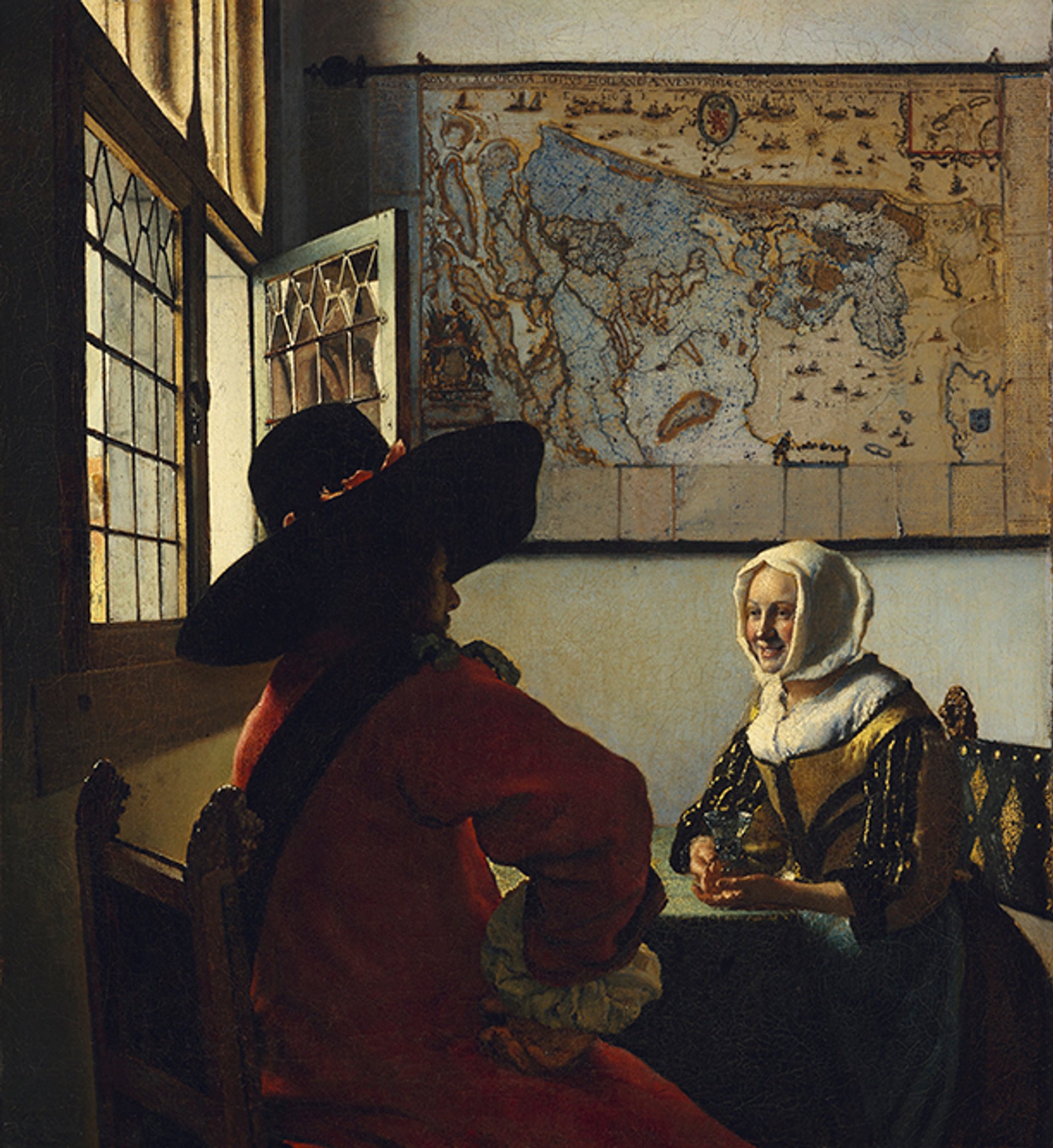
Vermeer made changes to Officer and Laughing Girl (1657-58)
Photo Joseph Coscia Jr, © Frick Collection
• While working on The Milkmaid (Rijksmuseum, 1658-59), Vermeer shortened the woman’s blue apron slightly, to leave more space for the red skirt. This minor change enhanced the sense of depth in the foreground.
• In The Little Street (Rijksmuseum, 1658-59), the main door of the house was originally closed, before Vermeer choose to depict it open. This gave a more three-dimensional illusion to the building.
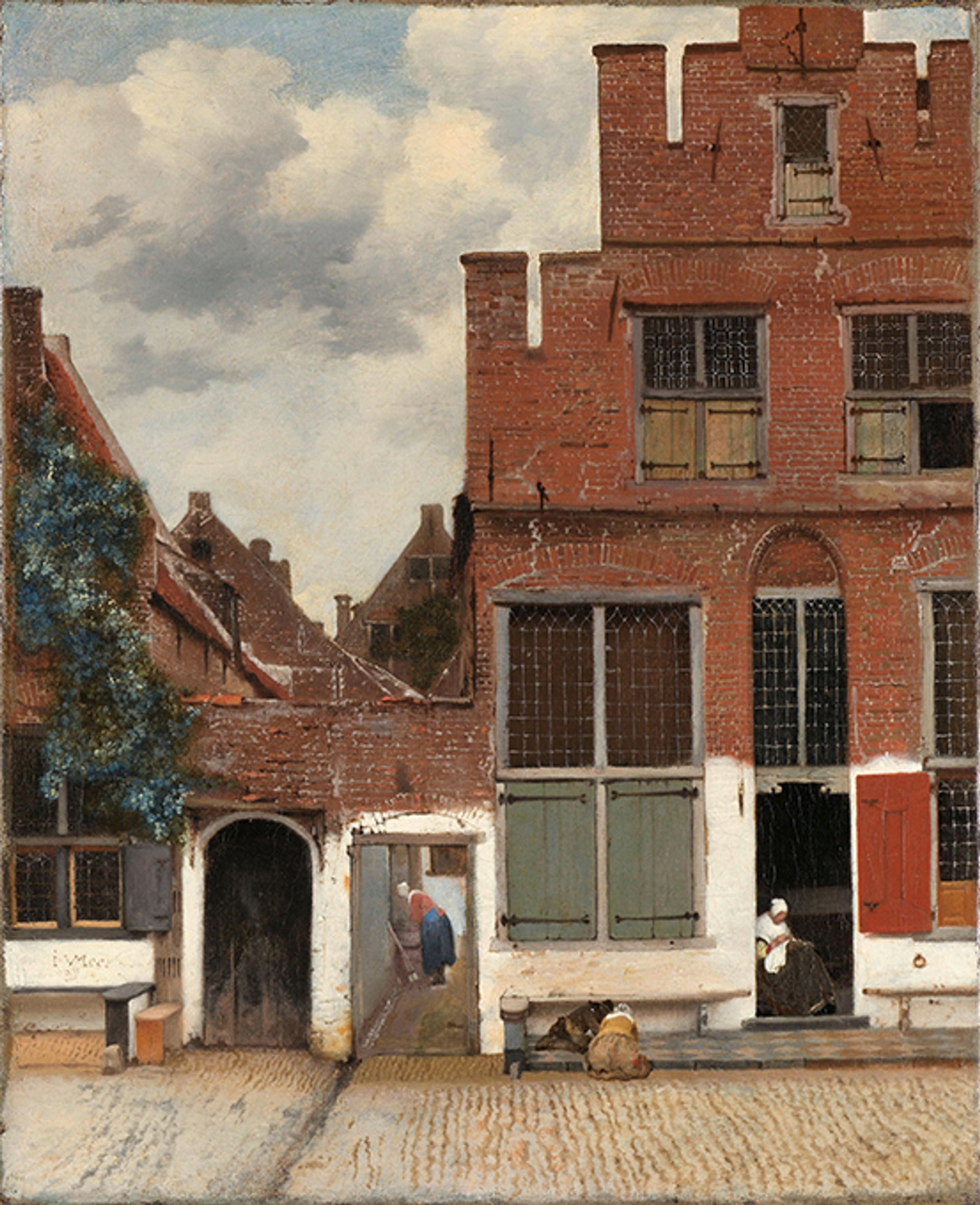
Vermeer originally had the main door of the house in The Little Street (1658-59) closed
Rijksmuseum
• In three cases the dating of paintings has been revised since they were hung in the Amsterdam exhibition. Research on Vermeer’s use of blue and green pigments suggests that these pictures should now be dated later in his career than had previously been proposed, to around 1669. Girl with the Red Hat and Girl with a Flute, from the National Gallery of Art (NGA), Washington, DC, were both dated in the exhibition to 1664-67. However, the NGA now dates Girl with the Red Hat to 1669. To add to the confusion, the NGA rejects the attribution of its Girl with a Flute, assigning it to a studio associate of Vermeer and dating it to 1669-75. It still remains accepted as authentic by the Rijksmuseum. The Lacemaker was dated to 1666-68 in the exhibition catalogue (while the painting remained on loan to Louvre Abu Dhabi), but the Musée du Louvre now dates it to 1669-70. The Rijksmuseum conservator Annelies van Loon agrees with the Louvre’s revised dating and a similar period for the two NGA panels.
• Meanwhile, research is still continuing on the controversial Saint Praxedis (1655, Kufu company, on long-term loan to the National Museum of Western Art, Tokyo). This is a copy of a work by the Italian artist Felice Ficherelli. It was first attributed to Vermeer in 1969, after it was noticed that a barely visible signature appeared to be that of the Dutch master. Some specialists accepted this copy of the Ficherelli as an early Vermeer, although others questioned the attribution. The latest research shows that the white paint in Saint Praxedis was manufactured from English lead, but this neither confirms nor refutes the Vermeer attribution. Although Saint Praxedis was fully accepted by the Rijksmuseum as a Vermeer in the 2023 exhibition, two specialists in the book describe its status as “disputed”.


